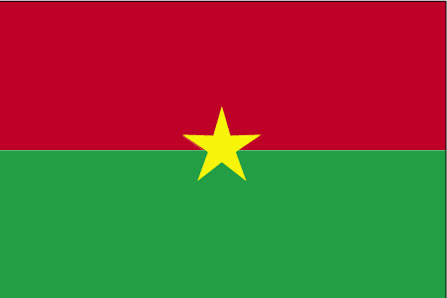To help inspire or plan your trip to Burkina Faso, some of its major attractions
for travellers are shown below, including some of the best natural, historical, cultural and adventure sites in the country.
These include all of UNESCO World Heritage Sites for Burkina Faso which represent the best
of the world's cultural and natural heritage.
Click on the icons below to focus on specific types of features
(click again to return to all).
|
|
|
|
|
|
|
|
|
|
|
|
 |
|---|---|---|---|---|---|---|---|---|---|---|---|
| Natural | History | Wildlife | Trekking | Cities | Religious Monument | Boat Journey | Rail Journey | Diving | Cultural | Adrenaline | UNESCO WHS |
Cultural attractions in Burkina Faso
| Ouagadougou | |
|---|---|
Ouagadougou, the capital of Burkina Faso, is a vibrant and chaotic city and one of the cultural centres of West Africa. Once the capital of the Mossi empire, Ouaga is now home to all the country's major ethnic tribes. The city is famed for its nightlife and as a centre to experience the music for which the region is renowned. | |
| Bobo-Dioulasso | |
|---|---|
Bobo-Dioulasso is Burkina Faso's second city and is one of the most vibrant and attractive in West Africa. The city is a mix of French and Sudanese style colonial architecture, with highlights including the train station and the Great Mosque, built to resemble the famous mosque of Djenne. The Grand Marché contains a great selection of tribal arts from all over West Africa and the unique masks of this region. Bobo-Dioulasso is known as the 'Music Capital of Burkina Faso' and the city comes alive at night-time and the weekend with the rhythms of West African music | |
| Banfora | |
|---|---|
Banfora is a sleepy and picturesque in the west of Burkina Faso which comes alive on Sundays when its market attracts traders from as far away as Mali and the Ivory Coast. The surrounding region contains numerous natural attractions. These include Karfiguela Waterfalls, Lake Tengréla - home to hippos and a wide variety of bird life and the Fabedougou ‘Domes’, giant, egg-shaped rocks that date back two billion years. | |
| Gorom Gorom Market | |
|---|---|
The small village of Gorom Gorom in north-east Burkina Faso is renowned for its Thursday market, one of the most famous, colourful and interesting in West Africa. A diverse range of ethnic groups can be seen at the market including indigo-clad Tuareg nomads who arrive by camel from the Sahara Desert, Bella people who were the former slaves of the Tuareg, Songhai farmers and the Fulani herders and their women adorned with heavy gold earrings. The markets sells a huge range of goods including leather, fabrics, elaborate African printed cotton and intricate Tuareg jewellery while livestock are traded at an adjacent animal market. | |
| Lobi Country and the Ruins of Loropéni | |
|---|---|
Gaoua is located in the heart of Lobi country, a culturally distinct people with a distinctive architecture. Their fortified family compounds are built in the fields widely separated from their nearest neighbours. The Lobi are a fiercely independent and shy people who still adhere to many of their traditional customs. Nearby the ancient stone ruins of Loropéni are the best preserved ruins in the Lobi area and have recently been shown to be at least 1,000 years old. Much about the site is unknown but it is believed to have been occupied by the Lohron or Koulango peoples, who controlled the extraction and transformation of gold in the region when it reached its apogee from the 14th to the 17th century. UNESCO World Heritage Site: The Ruins of Loropéni | |

